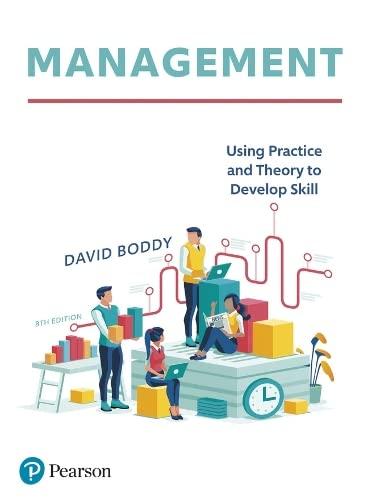Question
Knowledge questions: Q 1. What is the difference between chronic stress and acute stress? List one (1) possible impact of each.? Q 2. How might
Knowledge questions:
Q 1. What is the difference between chronic stress and acute stress? List one (1) possible impact of each.?
Q 2. How might you recognise that a worker you are supervising is experiencing excessive and prolonged stress and burnout? Describe the support you could provide to ensure the worker fulfils their duty-of-care obligations. Refer to two (2) effective communication skills in your answer.?
Q 3. Describe two (2) impacts of grief.?
Q 4. List two (2) stress disorders that may result from being exposed to violent or threatening behaviour .?
Q 5. What are the two (2) components common to psychological debriefing?
Q 6. List three (3) guidelines that organisational protocols may provide when you are planning and preparing for a debriefing.
Q 7. How soon should debriefing occur after an incident? Explain your reasons.?
Q 8. Explain two (2) methods for facilitating open discussion when conducting a debriefing and two (2) techniques for making the environment safe for discussion.?
Q 9. Provide an example of a technique that can be used during debriefing that will encourage the exploration and reflection of emotions related to the incident.?
Q 10. Explain the coping strategy that people commonly use for switching off their emotions. Explain the effectiveness of this technique?
Q 11. Identify three (3) organisational policies and procedures or protocols that may be relevant to crisis procedures.?
Q 12. What does the Fair Work Act 2009 (Cth) say in relation to dispute resolution? List the first two (2) stages in a dispute resolution process.?
Q 13. What is meant by crisis intervention?
Q 14. What is meant by structured debriefing?
Q 15. Identify an example each for internal and external referral sources related to debriefing?
Q 16. What services are available for employees through the Employee Assistance Program (EAP)?
Q 17. Identify two (2) indicators of significant issues being experienced by a worker. List two (2) ways to respond to those indicators
Q 18. What is the legal and ethical requirement a supervisor must be aware of when a worker discusses personal matters with them during a debriefing session?
Q 19. List three (3) sources you could refer to identify your professional boundaries and work responsibilities.?
Q 20. Identify four (4) practices you could use that acknowledge and accept workplace diversity.?
Q 21. Why is it important to regularly monitor how well your colleagues are performing in relation to both professional and personal standards?
Q 22. Identify three (3) areas you should consider when using self assessment as a strategy to monitor your workplace performance.?
Q 23. Briefly describe the significance of regularly seeking formal and informal performance feedback.?
Q 24. What is the appropriate questioning method to encourage colleagues to explore and acknowledge their concerns? Provide two (2) examples of possible questions you would ask.?
Step by Step Solution
There are 3 Steps involved in it
Step: 1

Get Instant Access to Expert-Tailored Solutions
See step-by-step solutions with expert insights and AI powered tools for academic success
Step: 2

Step: 3

Ace Your Homework with AI
Get the answers you need in no time with our AI-driven, step-by-step assistance
Get Started


